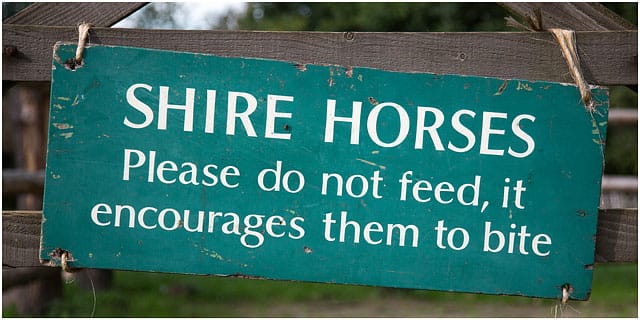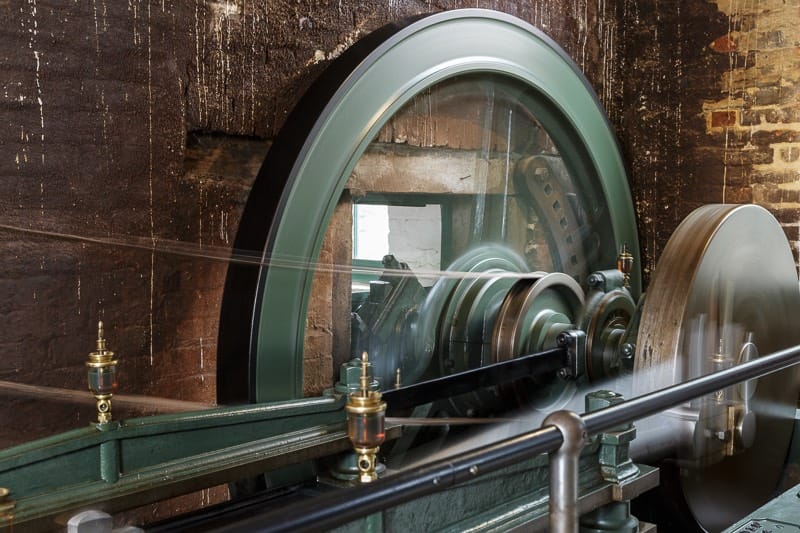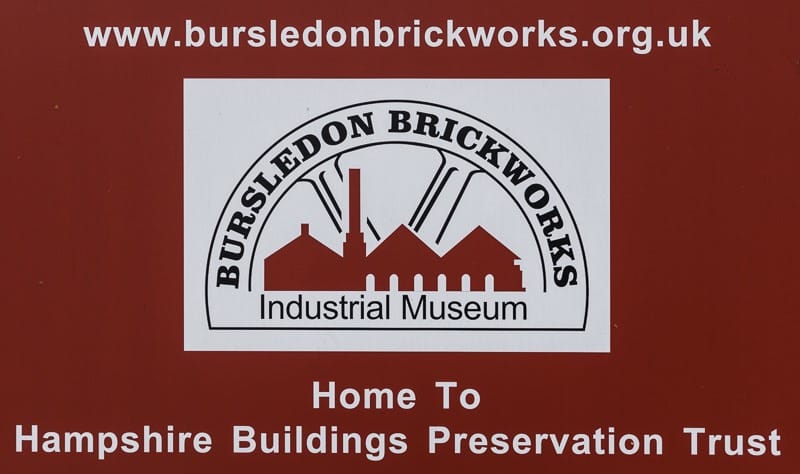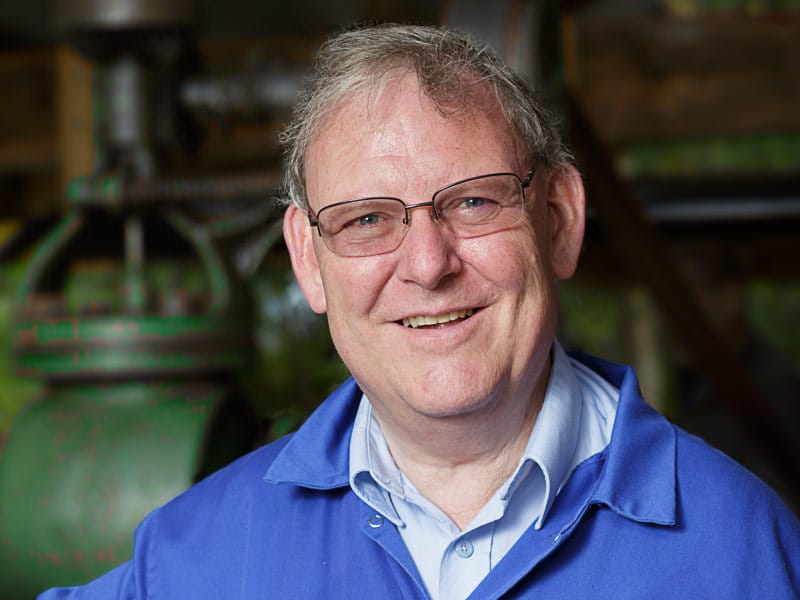We finish up our story of Bursledon Brickworks Museum volunteer Bob Palmer, with a quick…
Archaeology – it’s not a dirty word
Get out on the highway or, a lifetime of digging in the dirt.
You would think that suffering a nervous breakdown at the age of twelve would be one of the worst starts in life for a young lad. As it turns out, this less than ideal beginning was the start of a life long passion with, what is now referred to as, both ‘dirt’ & ‘standing’ archaeology.
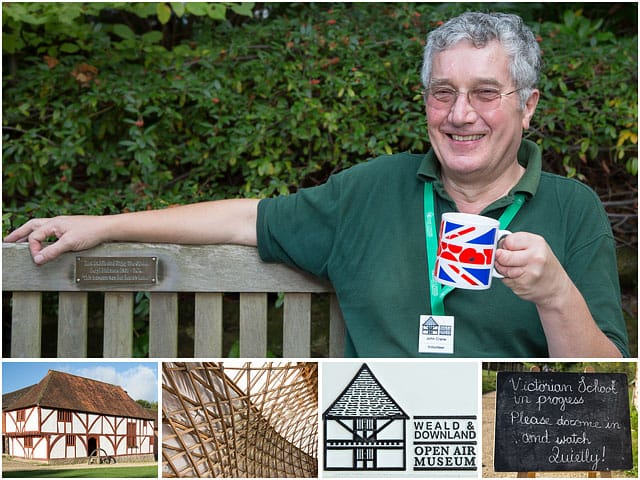
All roads lead from Findon
John, after being born opposite the gates of Chester Zoo,’in a house’ as he is keen to point out, spent his formative years in Essex. Passing the eleven plus, gaining grammar school entry and winning a scholarship to a private school, all in a very short space of time, took its toll on the young John. As part of the three-year recovery process from what became a nervous breakdown, John was enrolled into one of the first remedial education programmes in the country. Based in Worthing, West Sussex, one of the latter classes made available was the opportunity to join with a group of people from the Worthing Archaeological Society Field Group. This group had started to excavate a Roman well at Findon, nr Worthing, West Sussex, which reached a depth of 203 feet. It was during this experience that John got bitten by the bug for, quite literally, digging up the past. This is his story.
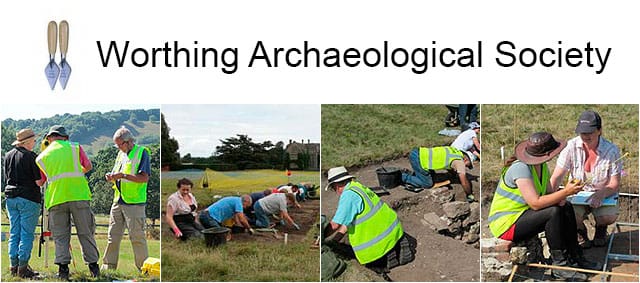
In the beginning
John and I are sat under the shade of a large oak tree, on a bright English sunny summer’s day, on a hill overlooking the extensive site of the Weald and Downland Open Air Museum (WADOAM), in Singleton, nr. Chichester, West Sussex.
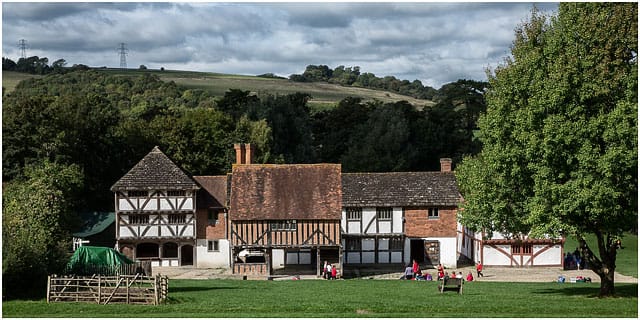
So it all started at Findon then?
Yes, that remedial education course was the making of me really. Everything was project based, much as it is now in modern schooling. It was all very new and experimental back then of course (early 1960’s), but it certainly worked for me.
How old would you have been then?
Fifteen, coming on sixteen when I started ‘digging’.
This was your first foray into excavation at archaeological digs. What was it that resonated with you?
It was the fact that there were people of all ages, all mucking in together, often camping on a site. A shared experience, the camaraderie and the sense of discovery. You can have days on end with relatively little to show for the effort expended and then, suddenly, the excitement of one small find, or uncovering a structure, can change everything.
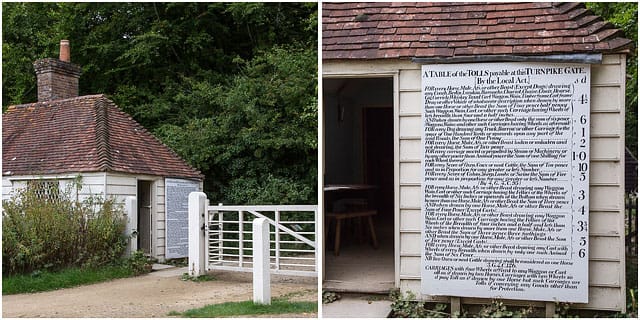
A good example was the Charlton site, south of Petersfield (Hampshire) in the early 70’s. We were excavating on top of the Downs to investigate where the various people’s, who had migrated from the continent across the North Sea, had initially lived and farmed in the 5th and 6th centuries AD. Numerous Pagan cemeteries had been excavated on the South and East coasts, but rarely their domestic sites. We discovered rows of large 5th and 6th century post holes. The early Saxons who had come over, built stock corrals and large post-fast halls where they slept, ate and drank etc; as recorded in the writings of the Venerable Bede. It’s assumed that these migrants integrated over time with the existing native population, adopted Christianity, and formed the nuclei of the parishes that have subsequently developed. Peter Addyman, who was the Professor of Archaeology at Southampton University, went on to set up the Jorvic Centre and the York Archaeological Trust. We did have a set of reproduction posts here at WADOAM, marking out the ground-plan of the Hall, but nobody could agree on what its superstructure may have looked like above ground, so when decay set in, they were removed. It’s only in later years, with discoveries in Denmark and Germany, that preserved building remains were found. These gave a better indication of how they may have appeared. During the 1960’s, after Findon, I did three annual, six-week, seasons at Fishbourne Roman Palace, and excavated in Winchester, London, York, and other lesser known sites.
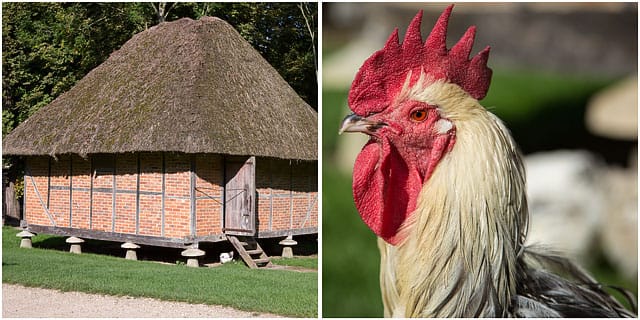
A short break of 40 years!
During the late 1960’s and early 70’s, John did a whole range of short-term jobs to fund his new-found passion. He would spend time, working and camping at digs, dotted all around the country, until the money ran out. Then it was back home to earn enough money before heading out on the road again. In 1972, when he decided that it was about time to have a bit more financial stability and buy a car, he commenced a career in the wine trade. For the next thirteen and half years, starting as a van driver for off-licenses, he worked his way up to branch manager in the Sussex and Surrey areas with Allied Lyons.
In 1985, Allied Lyons restructured its business and he was offered a voluntary redundancy package. John took up the offer and embarked on a complete career change. He moved to a job as a Highways Public Utilities Trench Inspector for West Sussex County Council, in the Arun and Chichester District Council areas. One of the requirements was to attend day release education courses to be retrained as a maintenance engineer. He was then promoted progressively, over the following 25 years, to an Assistant Highways Superintendent, Highways Superintendent and, finally, Senior Highways Officer.
John didn’t really fully get back into archaeology until about eight years ago. He’d always kept the interest, but work and family life limited the amount of spare time that he was able to commit to it. In 2009, John successfully completed a six-year extramural BA Hons Degree course in Landscape Studies (Archaeology) at Sussex University.
John has been happily married to Doreen [Dor] since 1976. Their children, Rowan and Bryony, are now fully grown and in a long-term partnership/marriage respectively. John and Dor are to become grandparents at the end of March 2014, when Bryony’s baby is due.

The Weald and Downland Open Air Museum [WADOAM]
The Weald and Downland Open Air Museum is an open air museum at Singleton, Sussex. The museum covers 50 acres, with nearly 50 fully equipped historic buildings, dating from the thirteenth to nineteenth centuries, along with period gardens, farm animals, walks and a lake. The buildings at the museum were all threatened with destruction. They were carefully dismantled, conserved and rebuilt to their original form at the museum. These buildings help the museum bring to life the homes, farmsteads and rural industries of the last seven hundred years. Many buildings situated there are over four hundred years old, and still stand strong. Along with the buildings, there are ‘hands on’ activities in school holidays, special events, conferences and a plethora of traditional craft, building trades and timber framing courses available throughout the year, right up to an MSC in Building Conservation, overseen by York University.
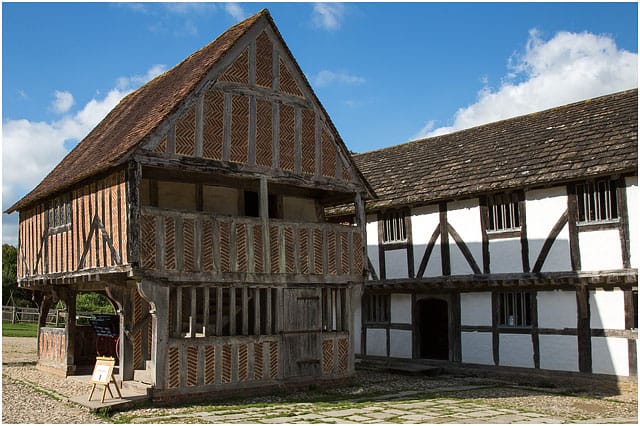
You finished with the highways in 2011.
I took voluntary redundancy as part of the national local authority reductions/rationalisations associated with the aftermath of the international financial crisis, and it became the perfect opportunity to be able to volunteer for the interests that I’ve had pretty much all my life.
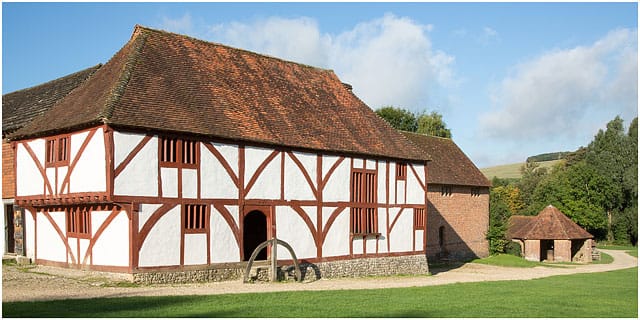
It seems that a lot of your past has pointed the way to WADOAM?
J. Back in 1968/9, when it was initially being set up, the Worthing Archaeological Society Field Group [WASF] (who I had worked with since 1963) cut the first paths and set out the bases for two of the original buildings and other exhibits at the Museum. So I had links there, and our family have always been ‘Friends’ of the museum, as its a great place to regularly visit with a family. The WASF group’s latest annual ‘dig’ [2013] was for two weeks in August at Parham House, next to the church, on a medieval cellar and associated cesspits, dating from the 13th century.
Since 2006 I’ve been the Meetings/Visits Secretary for the Wealden Buildings Study Group. I’m also their Digitisation Officer, which involves inputting the last 50 years of Sussex hard copy building reports into the Building Archaeological Research Database system [BARD].

It was one of the founders of the Wealden Buildings Study Group, the late Dr [Jack] Roy Armstrong MBE, who was the driving force behind the creation of WADOAM back in 1969. Influenced by the Scandinavian open-air museum movement, Roy founded the museum to awaken public interest in preserving examples of vernacular architecture, through its collection of rescued historic buildings, which illustrate building traditions in the region.
So it’s 2011 and you’ve turned up on the doorstep of WADOAM and said ‘I want to join the team …’
I emailed first and had an interview with Charlie, as do all prospective volunteers. The thing with this place is that it’s just like the digs. The camaraderie and attitude is exactly the same, bickering like an extended family [LOL]. What’s interesting is that several of the folk who started out as volunteers, have eventually become staff.
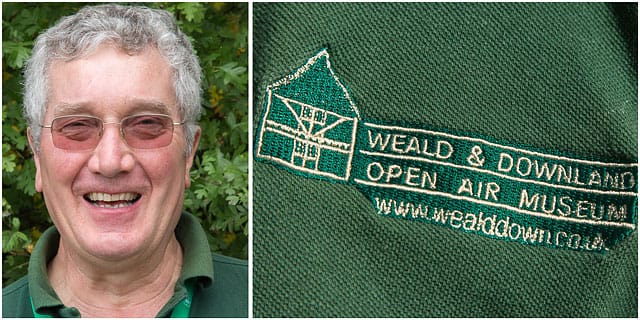
How much time do you give to volunteering?
I do two days a week at the Museum. You need two consecutive days to be able to properly complete the various parts of the projects each week. Apart from annual holidays, that’s every week of the year, 100 plus days. You’ll occasionally spot me in supermarkets, or other key public areas, arranging for posters/leaflets, or whatever, to keep the Museum and its activities in the public consciousness. And, of course, the WADOAM Marketing Officer uses all types of social media channels to keep us in the public eye.
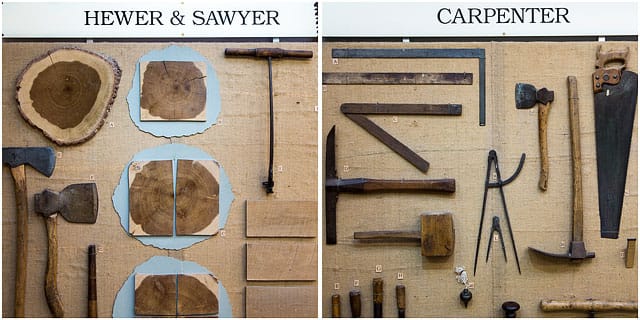
How many volunteers are there?
I’m not sure of the exact numbers, we can check that, but roughly speaking it’s close to six hundred. Some only do one day occasionally, whilst others, much like myself, are here a lot more regularly.
That must be quite difficult, to ensure you have the best coverage of people for all the regular activities and special events?
Charlie and Richard Wilde have now set up a system using a smart phone/PC database, where we can keep track of who has what skills and their availability etc; to make the operation more efficient.

Do you get any requests for help outside of your usual Tuesdays and Wednesdays?
Yes, but not very often since I became a part-time Warden.
When did that happen?
A year ago last July (2012). I was head hunted as the most innovative volunteer [LOL]. Basically a Warden is responsible for First Aid, Health and Safety, Car Parking, Customer and Volunteer liaison, and any other help that the different departments may ask for on site. Especially at weekends as, generally, there will only be a handful of permanent staff on site then, supervising courses and running the shop.
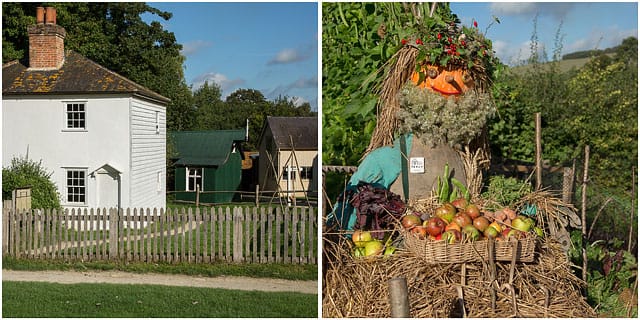
I take that there’s more than just one Warden?
There’s two staff, Miss Charlie Thwaites, who’s Chief Warden and Visitor and Volunteer Co-ordinator, and her new part-time assistant, Phil. The other 5 ad hoc Wardens, such as myself, assist at major events, cover most weekends and the leave/sickness of Charlie and Phil. We are paid for these ad hoc days, but, when volunteering, a basic fuel only rate, based on return mileage between home and the Museum, is provided.
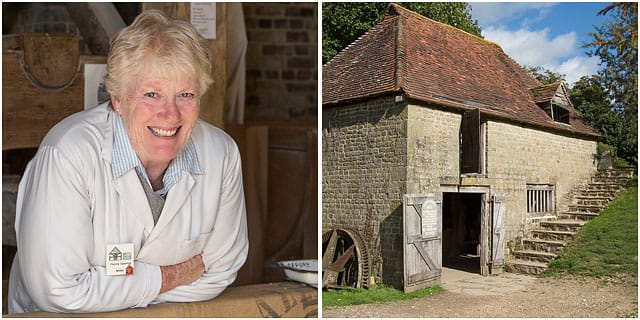
What was the first job you were given when you started?
I had a telephone call that very first week, because they were expecting a group of fourteen/fifteen year olds, from a Waterlooville school, for a visit. The scenario for the school visit was that there had been a major disaster, and they had to fend for themselves. So our job was to show them, in a short time, how various simple techniques could be used to build a habitable shelter. It was interesting to see how the different groups self-organised. Some were natural leaders; some were clearly more switched on than others and would think and plan everything, whilst others were happy to pretty much be told what to do. In general, the lasses were more motivated than the lads, but their mascara ran when struggling with wet sheaves of straw when thatching [LOL]
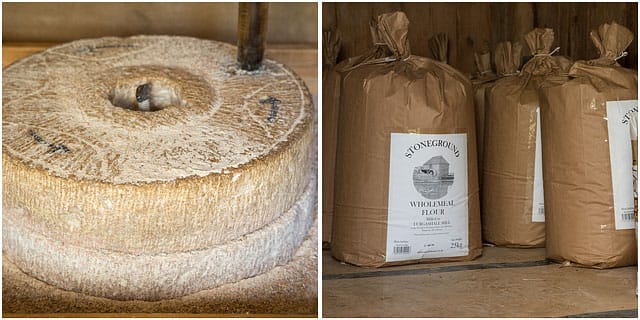
As part of that event, Dave Meers, who also volunteers on the Jack and Jill Windmills at Clayton, behind Brighton, introduced the teenagers to the art and application of wattle and daub; very messy and smelly [LOL]. We are both members of the Tuesday/Wednesday Gangs. The Tuesday Gang are mainly responsible for general maintenance and lots of the smaller manufacturing and repair projects. Dave, who is more used to larger construction projects, is part of the Wednesday Gang, which generally take on the bigger jobs like tarring the buildings, re-cladding the Goose House etc.
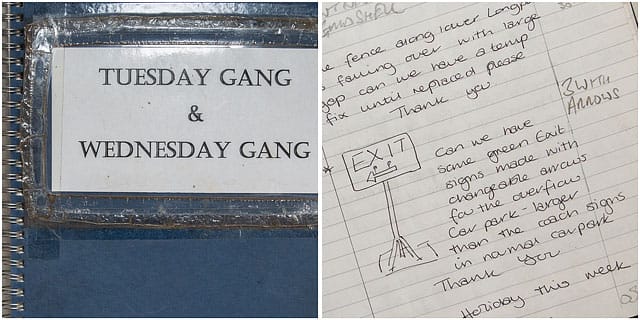
One of the first things that I was responsible for was manufacturing many new site signs. The big, green, special event ones and all the smaller building specific ones. Cutting the wood, painting and applying all the lettering. I turn up all year round for these types of activities. No matter what the weather is. It can get a bit ‘brass monkey’ cold as well, even when we are up in the Gridshell workshop.
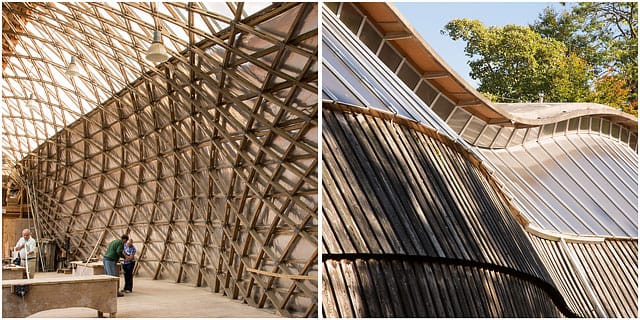
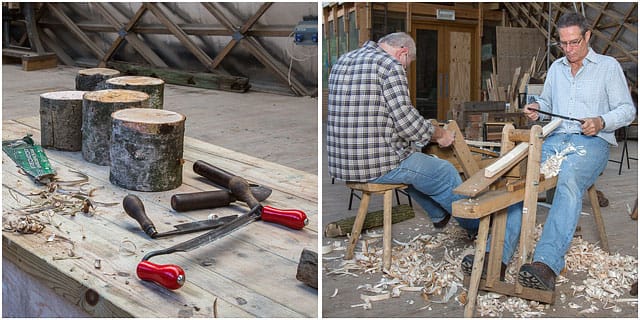
Roger Champion, who until last year was our resident Master Carpenter (Joe Thompson is our Carpenter in residence, Sussex Iron and Oak ), has been with the museum since it’s foundation in 1969/1970. He’s now officially retired, but he has stayed on as a volunteer. All the buildings are furnished with wonderful reproduction furniture that he has researched and made. He’s well-known for having a finger-post sign in his front garden, pointing to where all the local pubs are!
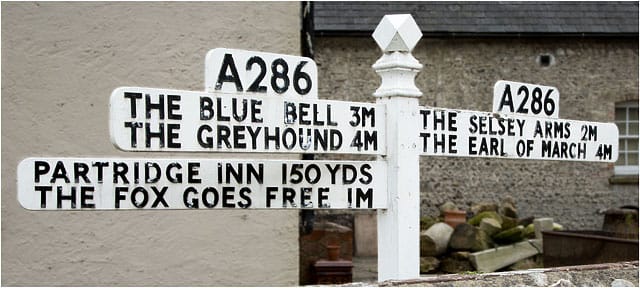
Our oldest volunteer on the Tuesday Gang, John, is 92.
Wow, that’s going some.
John was in the Royal Navy in WW2. He’s been volunteering here, and with the National Trust, since he retired 32 years ago. I think he’s considering calling time. Mainly because he has to travel from South Surrey, and he’s not so comfortable with his driving abilities as he was.
WADOAM site update
You must have seen some tremendous changes at site over all these years (slight understatement)
From the humble beginnings, we now have fifty exhibit buildings actually on show. A wonderful piece of news for us is that we’ve just had approval for £4M funding from the Heritage Lottery Fund [HLF], of which we have to raise £.8M to qualify for a major site update. The ‘Longport” farmhouse will no longer be used as shop/offices and will be reinterpreted back to its original use. We’ll have a brand new area for offices, teaching facilities for children and adults, landscaped car parking (the current overflow parking comprises fields of turf, but it is prone to water-logging) and a restaurant to replace the small tea room that the site currently has.
HLF – Heritage Lottery Fund. The body which distributes a share of the income from the National Lottery to projects aimed at preserving, and making accessible, the nation’s heritage.
I suppose that there’s a lot of bureaucracy with building regulations etc.
Yes there is; although a building might be 600 years old, to re-erect it here still requires planning permission. We’re working with the first £250,000 of the grant on advice from the HLF; which is the planning stage. Setting up with a project manager, architects etc. And we will be the official gateway to this area of the South Downs National Park. It’s expected to take approximately two years to complete the scheme.
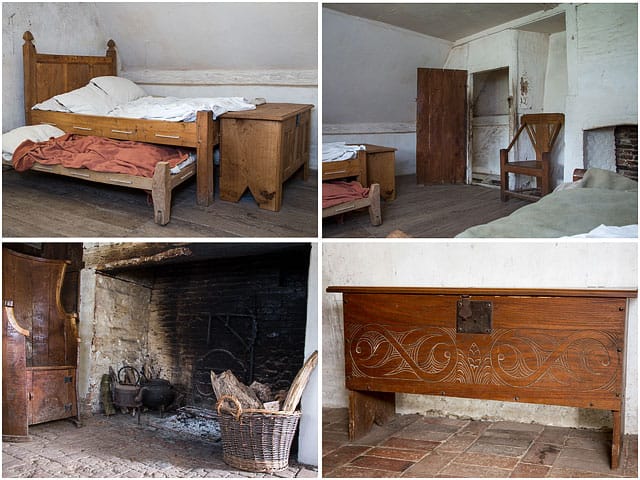
Did I read something about the site using some turf from the Olympic Stadium?
Last year, 200 square meters of Olympic Stadium turf were donated to us by the original supplier. With thirty species of wild flowers and five species of native grasses, it was a real picture in the spring. Because it was all grown on webbing, they could lift them as the scene changed in the stadium, and load it into skips for re-cycling. The South Downs National Park were so impressed by the result that they have decided, at the end of the season, to convert all of this area in front of us into a wild flower hay meadow. It’s eminently in keeping with the buildings, as hay meadows would have looked like that in the past. Without all the modern-day pesticides to affect the area, the increase in wildlife will be considerable, which will all add to the richness of the Museum’s environment. We are one of the principal Nationally Designated Museums in the country.
The Designation Scheme is an English system that awards ‘Designated status’ to museum, library and archive collections of national and international importance.
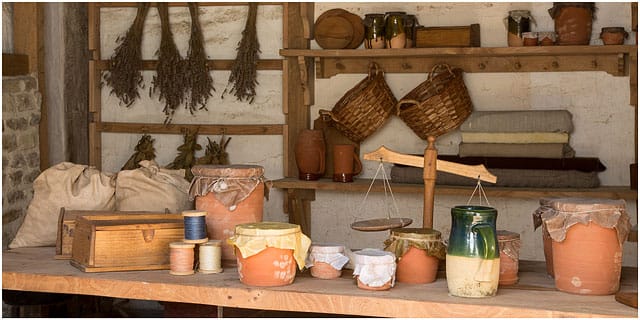
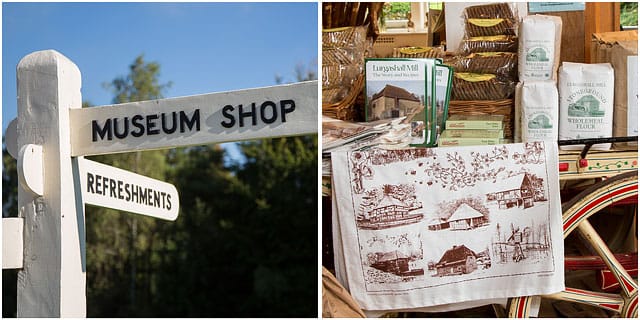
How do the school workshops etc. get organised here at the museum?
Most are run by volunteers. Many are ex-teachers who have retired. There’s training going on all the time here for the volunteers. Knowledge of the houses, knowledge of the crafts and skills from that era etc. Dozens and dozens of training sessions, including all the standard health and safety things like Fire, First Aid etc. The Interpretation and Learning Teams liaise on all aspects of this training, so we’re always up to date with current theories and thinking. It doesn’t matter what the background may be of a volunteer, they can all benefit from the wealth of experience and knowledge available to them at these training sessions and on an ad hoc basis.
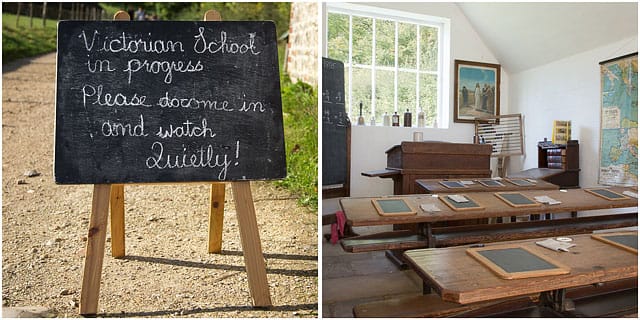
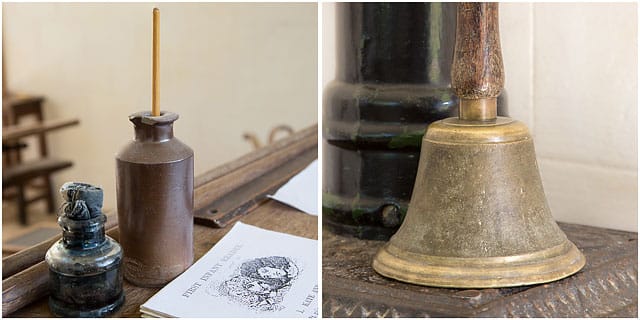
Royal connections
I hear that WADOAM have had recent associations with the Royal Family?
Prince Charles initially had a very lengthy visit, followed in subsequent years by other members of the Royal Family. Of course, we would be greatly honoured if a certain two persons, plus a small one, were to visit, perhaps in the not too distant future, which would be great. It all helps with raising our profile. Recently, two of the Antiques Roadshow television programmes were filmed here, and Ruth Goodman and the Victorian/Edwardian/War Time Home team, from Lion TV, have been filming ‘Tudor Monastery Farm’ most of this year, for showing on BBC2 this autumn and at Christmas. Volunteers and staff have been extras, I was a ‘silent order ’Carthusian monk (sign language only- LOL),and the young ladies involved will never live down being ‘wenches’ in the Tavern, with their high profiles!
That must keep the marketing manager busy.
Yes, but the marketing element is only one facet of an integrated team of full and part time salaried staff, plus the volunteers and Friends, that keep everything running smoothly.
The whole organisation is one charity?
It’s an educational charity, but, of course, the trading arm has to be a separate entity. The funding for some of the everyday site work and equipment, such as thatching for a building, comes from the annual subscriptions of the ‘Friends of WADOAM’ or specific grants from outside organisations.
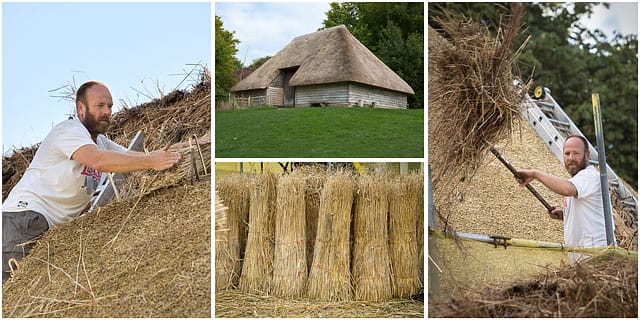
After what has now been two years here, what would you consider to be the highlights?
I think it’s basically working with friendly people, who have so many varied skills, and learning new ones yourself because of that. It’s one of those areas where your contribution is so important to the survival of the site, as it exists today, and in the future. And knowing that your contribution is truly valued. Without the volunteers, this place would really be a hollow shell or, at least, definitely not how it is today.
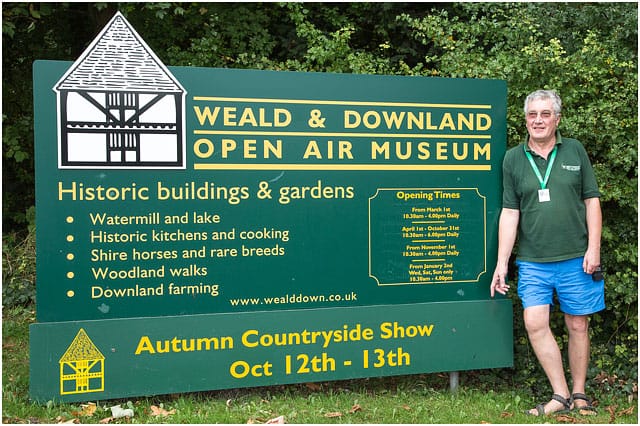
So you’re constantly involved with the behind-the-scenes upkeep of the site?
Yes, but it’s this pervading friendly attitude, that manifests itself in all areas to visitors, that is a major plus point. One of the things that repeatedly gets mentioned on the web site and social media, such as Facebook, is how friendly everyone is. Whenever a volunteer sees a member of the public lingering by a house or point of interest, most of us will not only pass the time of day, but strike up a conversation. It’s an opportunity to impart some knowledge that will make that person’s visit all the richer.
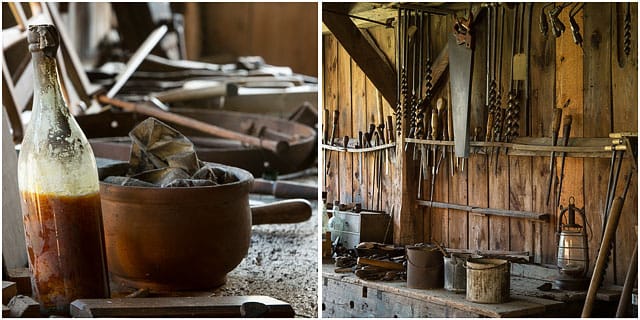
A night on the tiles
You’re a busy man for somebody who’s supposedly retired! I know that you have involvement with quite a few other projects, including unaccompanied folk singing. I’d like to do a separate Weekend Passions story in the future to cover that, if your willing?
Definitely. I do have an additional ‘archeology’ related hobby of making medieval influenced tiles.
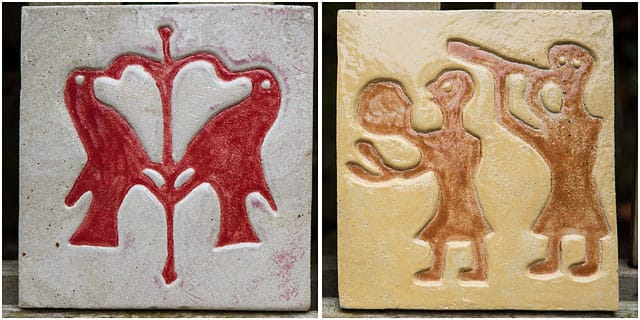
OK, tell us a little bit about that. What prompted your interest?
That was basically from the archaeology side of things. From handling artefacts at digs over many years, I was attracted to the designs that I’d encountered. So I started off having a go at recreating them, exactly as they were. We have visiting tile experts, Karen and Charlie Slade [‘Company of Artisans’], who run courses throughout the UK to create reproductions of these encaustic tiles. I found that my skills weren’t quite up to their standard to start with. I made lots of mistakes, and had lots of failures. Then I thought, “why not use the images, but in different forms?” So I do ceramic evening classes at Westergate Community College. Carving the moulds, working the clay, painting with slip and glazes, and the various firings in the kiln.
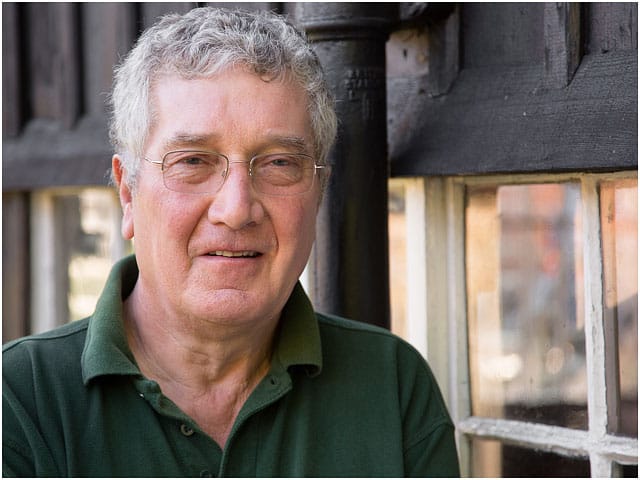
Anything else that you’d like to declare?
I’m attempting to raise awareness of Prostate Cancer. I’ve started to work with Prostate Cancer UK to do some charity work for them. There’s nothing definite at the moment, but they approached Peter Gabriel about using one of his songs [‘Sledgehammer’ from the 1987 album ‘SO’] for promotional purposes. They were turned down, so I’ve written a personal letter to him, as somebody who is currently undergoing treatment. I thought that I might try and appeal to him as a man who is at a time of life where he, himself, is entering the danger zone, so to speak. Still waiting for a reply on that one.
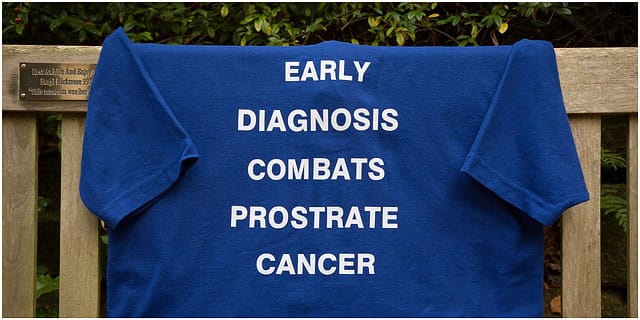
It would be great if we could link major fundraising initiatives, such as wing-walking with the Breitling team, as Miss Charlie Thwaites has volunteered to accompany me on the other biplane if it is arranged. 150mph – that will pull the wrinkles back![LOL]. I’ve created some polo shirts ‘early diagnosis combats prostrate (Adrian Mole book title) cancer’, which I wear at many locations. People love to come up and point out the spelling mistake, which then results in positive conversations, “you spotted the deliberate mistake”.
If you see John out and about, whether it’s imparting knowledge to visitors at WADOAM, in your local supermarket handing out leaflets, singing for his supper, fundraising, or at one of the many archaeology related groups or digs, be sure to say hello. He likes a chat 🙂

Links
Weald and Downland Open Air Museum
Web: http://www.wealddown.co.uk/
Facebook:http://on.fb.me/1afwief
Twitter:https://twitter.com/WealddownMuseum
Jorvic Centre
Web:http://jorvik-viking-centre.co.uk/
York Archaeological Trust
Web: http://www.yorkarchaeology.co.uk/
Fishbourne Roman Palace
Web Reference:http://en.wikipedia.org/wiki/Fishbourne_Roman_Palace
Worthing Archaeological Society Field Group
Web:http://www.worthingarch.co.uk
Wealden Buildings Study Group
Web:http://www.wealdenbuildings.org.uk
Facebook:https://www.facebook.com/WealdenBuildingsStudyGroup
Building Archaeological Research Database (BARD)
Web:http://www.tree-ring.co.uk/BARD.htm
Heritage Lottery Fund [HLF]
Web:http://www.hlf.org.uk/Pages/Home.aspx
South Downs Folk Singers
Web: http://southdownsfolksingers.blogspot.co.uk/p/about-us.html
Company of Artisans
Web:http://www.companyofartisans.co.uk/
Prostate Cancer UK
Web:http://prostatecanceruk.org/
Breitling Wingwalkers
Web: http://aerosuperbatics.com/index.php

